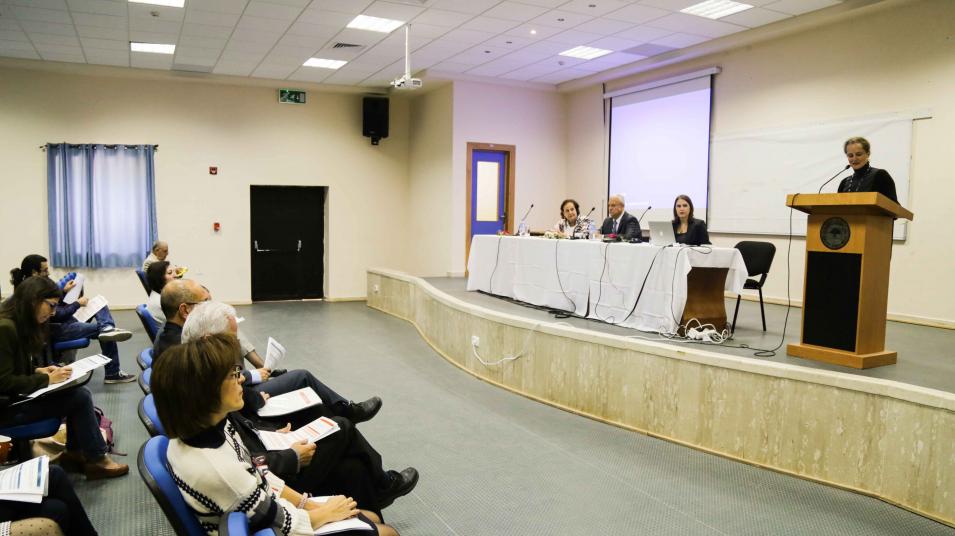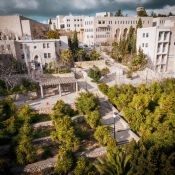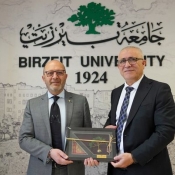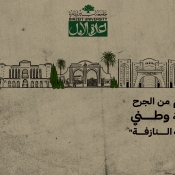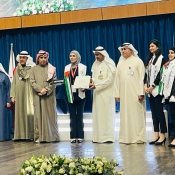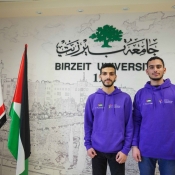Conference explores role of institutions in art practices, cultural production
Questions on structures, institutions and global dynamics were the focus of “Politics of Contemporary Art Practices and Cultural Production” Conference, organized by Birzeit University Museum and the Contemporary Visual Art Program on November 11, 2017, in collaboration with Birmingham City University and Erasmus+.
The one-day conference, curated by the researcher of Palestinian visual arts and culture Rawan Sharaf, addressed the politics of contemporary art practices and cultural production in Palestine through examining their association with the changing local, regional and global socio-economic edifices and networks.
Palestinian and international scholars, academic and practitioners discussed key topics on the role of cultural institutions as an agent in art and cultural practices; the connection between dominant structures, cultural institutions and independent cultural practitioners; the effects of neo-liberal economies and colonial structures on art production; and the contribution of art practices, pedagogies and interdisciplinary research in the domain of cultural production in fostering the interpretation of histories and re-writing narratives.
Birzeit University President Abdullatif Abuhijleh inaugurated the conference reaffirming the University’s mission to facilitate an environment where students are encouraged to challenge themselves, and develop a more complex set of skills to creatively and critically negotiate the turbulent shifts taking place locally and globally.
He pointed out to the new program of Contemporary Visual Art at Birzeit University, which will offer students a unique learning theoretical and practical experience, and will be taught by prominent visiting lecturers from Palestine and abroad.
Birzeit University Museum’s Founder, Vera Tamari called the conference as a positive opening act of the newly inaugurated program of Contemporary Visual Art at Birzeit University. She noted, “Such initiatives play a key role in the process of producing and circulating culture and arts.”
Tamari traced the evolution of the Palestinian art movement throughout history. Art and cultural practices, according to Tamari, were produced in line with the colonial context in Palestine: “Cultural practices have been deeply linked to the political domain and its reiterations. Art and culture have always been means to attain independence and maintain our national identity, especially in the seventies and eighties. Today, however, we are witnessing a new wave of contemporary arts, with new notions that revolve around producing art, art as an agent and an interdisciplinary field.”
Sharaf, the curator, detailed the framework of the conference and the questions that it attempts to answer. She said, “The conference discusses cultural production and reproduction, specifically in the sphere of visual arts, in Palestine, and its relation to the political apparatus. There is an apparent gap in the Palestinian community where an overarching institution that guides the cultural and artistic production should be; hence, we should strive to scrutinize and examine institutionalized production in the post-Oslo era of art and culture.”
The conference included two sessions. The first session, moderated by the Director General of AM Qattan Foundation Fidaa Touma, tackled issues on the indigenous history of Palestinian culture, the global contemporary art world, and the Zionist art in the first third of the twentieth century. Moderated by the Professor of Anthropology Rema Hammami, the second session discussed the role of cultural institutions and the political economy of global culture in the Middle East, and the effectiveness of Palestinian contemporary art practices in the context of the current social and political turmoil.

